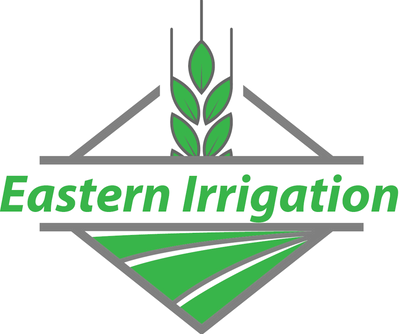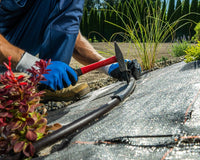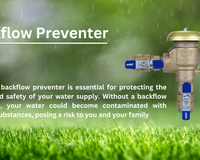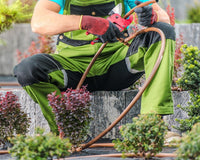When spring rolls around, homeowners begin prepping their lawns for the warm months ahead, and a vital part of this process is ensuring that sprinkler systems are in top shape.
The debate often boils down to whether you should tackle sprinkler system maintenance on your own or call in a professional. In this article, we will delve deep into the pros and cons of both options to help you make an informed decision.

1. Do It Yourself: Rolling Up Your Sleeves
Advantages:
-
Cost Savings: One of the most apparent advantages of DIY sprinkler maintenance is the potential for cost savings. Hiring a professional might incur a substantial fee, whereas doing it requires time and some parts or tools.
-
Learning Experience: Handling the system on your own gives you a better understanding of how it works. This knowledge can be valuable if minor issues arise in the future.
-
Flexibility: You can work on the system whenever it fits your schedule without needing appointments.
Drawbacks:
-
Potential for Mistakes: With proper training, you might avoid causing underlying issues or causing unintentional damage to the system.
-
Time-Consuming: If you're unfamiliar with sprinkler systems, the learning curve might consume much of your time.
-
Incomplete Tools: Professionals come equipped with specialized tools for every aspect of the job. As a DIYer, you might need to have these tools readily available.
2. Hiring a Pro: Letting the Experts Handle It
Advantages:
-
Expertise: Professionals have been trained to spot and fix issues the average homeowner might overlook. Their experience allows them to work efficiently and effectively.
-
Warranty and Insurance: Many professional services offer warranties on their work, ensuring that if issues arise post-maintenance, they'll handle them at no extra cost. They're also insured, protecting you from potential liabilities.
-
Convenience: Hiring a pro means you can go about your day without dealing with sprinkler maintenance, ensuring the job gets done with minimal disturbance to your routine.
Drawbacks:
-
Cost: As mentioned earlier, professional services come with a price. Depending on the complexity of your system and the extent of maintenance required, costs can add up.
-
Scheduling: You may have to book an appointment and adjust your schedule to accommodate the professional's availability.
Making the Decision: Factors to Consider
-
The System's Complexity: A professional's expertise might be invaluable if your sprinkler system is advanced, with features like drip irrigation or zone controls.
-
Age of the System: Older systems may require more intricate maintenance or parts that are hard to find, making a professional's knowledge beneficial.
-
Your Comfort Level: If you enjoy DIY projects and understand how things work, you might find the process rewarding. On the other hand, hiring a pro might be the safer bet.
-
Budget: Finally, consider your budget. DIY might be the route for you if you want to save money and invest time. However, remember that mistakes could cost more in the long run.

Here are a few sprinkler system maintenance scenarios that might help you decide.
Your Sprinkler Won’t Pop Up
There are several reasons why a sprinkler head won’t pop up. One of the most common is an easy fix. If just one sprinkler in the zone isn’t popping up, it may be covered by overgrown grass or debris. Shut the system off, remove the trash, then turn the system back on. If that doesn’t fix the problem, dirt may be trapped between the riser and the sprinkler cap. This can cause the sprinkler to jam. With the system running, tap the sprinkler's top with your foot to help loosen any dirt. Repeat this step a few times until the riser pops up quickly.
Water leaking out of the sprinkler could indicate a bad seal or damage to the head. If this is the case, you’ll need to replace the sprinkler.
You could have a water pressure issue if several sprinklers in the zone didn’t pop up. Ensure all of the valves in your system, including the main shutoff valve, are fully open. If that doesn’t fix the problem, it may be time to call your local irrigation professional. They’ll look at other issues, such as water pressure changes from your water provider, a faulty pump, or valve concerns.

Replacing Sprinkler Heads
Replacing damaged or inefficient sprinkler heads can be an easy DIY project if you’re willing to do some digging. Once you have a new, replacement sprinkler head, the task requires clearing the area around the sprinkler, unscrewing the old sprinkler head, and replacing it with the new model.
Once you've installed the new head, adjust the position and arc to ensure the sprinkler reaches the area that needs to be watered.
If the task is too difficult, it's time to hire a professional. Irrigation pros can help you pick the right sprinkler head for the job and adjust the arc and radius for precision watering. They can also help you to maximize efficiency and water savings by choosing the proper nozzle for your sprinkler.
Installing a New or Upgraded Irrigation Controller
If your irrigation controller or timer is over five years old, consider replacing it with a newer one. These timers are often simpler to program and come with extra features that improve your system's efficiency and water conservation.
Installing the new timer will require electrical work, such as switching off your power from the breaker box, disconnecting wires for each zone, attaching them to your new timer, and mounting the new box. As with any electrical project, following all installation instructions is crucial to ensure safety.

Whether you choose to maintain your sprinkler system yourself or seek the help of a professional, it is important to ensure that it remains in top condition. This will not only keep your lawn healthy and green, but it can also result in long-term savings on water and money.





